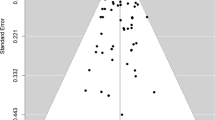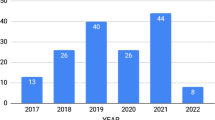Abstract
The idea of confining the idea of ‘rationality’ with that of the ‘choice of best elements’ unnecessarily limits the sense and scope of ‘rationality’. The existing internal consistency conditions that are popularly used in the social choice theory to assess a choice function are insufficient to analyse several choice patterns. The paper tries to address that problem by accepting a broader definition of rationality and characterizes choice behaviours where an individual chooses a k-th best element from set of alternatives, where k is an integer.
Similar content being viewed by others
References
Arrow, K. J. (1959). Rational choice functions and orderings. Economica, 26(102), 121–127.
Baigent, N., & Gaertner, W. (1996). Never choose the uniquely largest a characterization. Economic Theory, 8(2), 239–249.
Banerjee, T. (2022). Characterization of a second-best rationalizable choice function with full domain. Research in Economics, 76(1), 58–61.
Blair, D. H., Bordes, G., Kelly, J. S., & Suzumura, K. (1976). Impossibility theorems without collective rationality. Journal of Economic Theory, 13(3), 361–379.
Bossert, W., & Suzumura, K. (2009). External norms and rationality of choice. Economics & Philosophy, 25(2), 139–152.
Gaertner, W., & Xu, Y. (1999). On rationalizability of choice functions: A characterization of the median. Social Choice and Welfare, 16(4), 629–638.
Plott, C. R. (1973). Path independence, rationality, and social choice. Econometrica: Journal of the Econometric Society, 41, 1075–1091.
Richter, M. K. (1966). Revealed preference theory. Econometrica: Journal of the Econometric Society, 34, 635–645.
Robbins, L. (1932). An essay on the nature and significance of economic science. Auburn: Ludwig von Mises Institute.
Sen, A. (1993). Internal consistency of choice. Econometrica: Journal of the Econometric Society, 61, 495–521.
Suzumura, K. (1977). Houthakker’s axiom in the theory of rational choice. Journal of Economic Theory, 14(2), 284–290.
Uzawa, H. (1956). Note on preference and axioms of choice. Annals of the Institute of Statistical Mathematics, 8(1), 35–40.
Acknowledgements
I would like to thank Professor Satish K. Jain for helping me develop my ideas and also for all the discussions we had while writing this paper. I would also like to thank the two anonymous reviewers for their valuable comments and suggestions.
Author information
Authors and Affiliations
Corresponding author
Additional information
Publisher's Note
Springer Nature remains neutral with regard to jurisdictional claims in published maps and institutional affiliations.
Rights and permissions
Springer Nature or its licensor (e.g. a society or other partner) holds exclusive rights to this article under a publishing agreement with the author(s) or other rightsholder(s); author self-archiving of the accepted manuscript version of this article is solely governed by the terms of such publishing agreement and applicable law.
About this article
Cite this article
Banerjee, T. Characterization of a k-th best element rationalizable choice function with full domain. Theory Decis (2023). https://doi.org/10.1007/s11238-023-09958-4
Accepted:
Published:
DOI: https://doi.org/10.1007/s11238-023-09958-4




